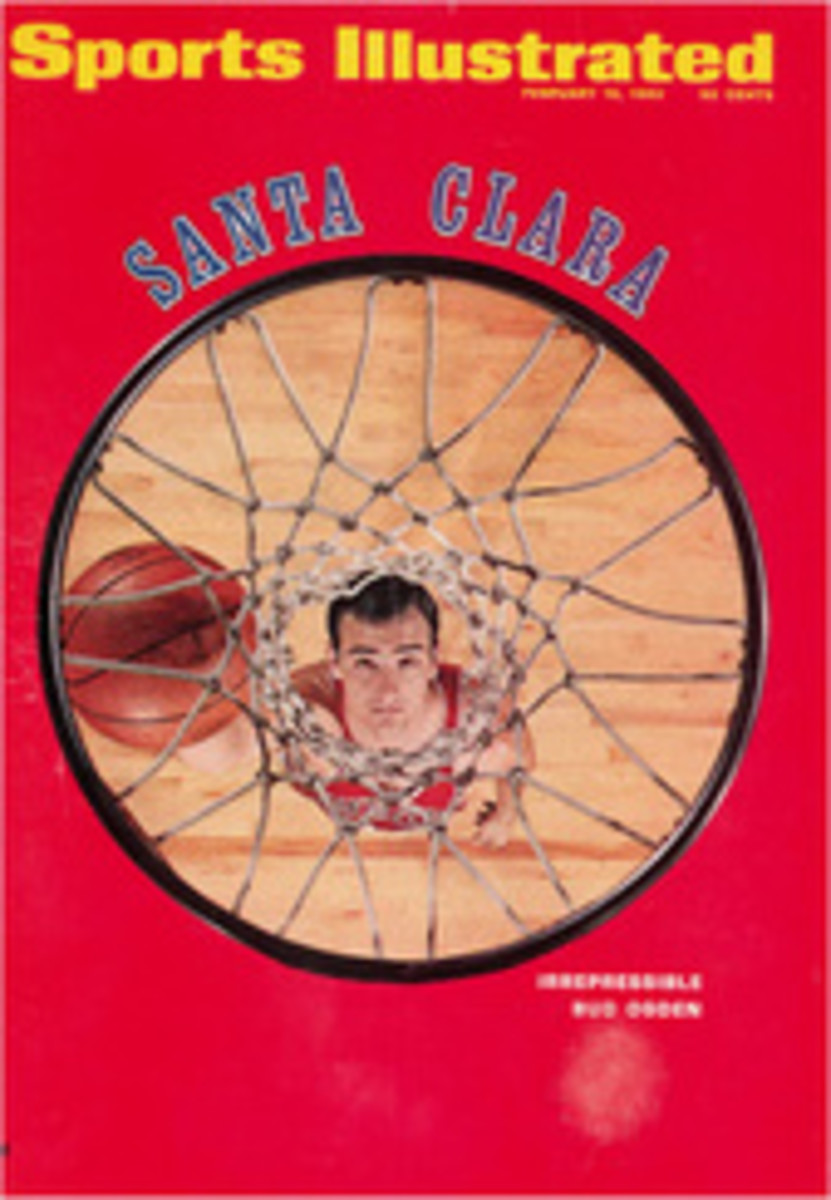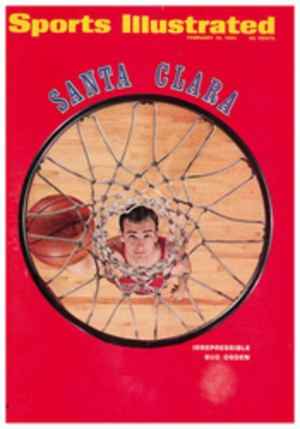
Gundy's victory was no fluke
Down on the east coast of Florida, where she has been catching sea trout by the pailful and the mackerel have been snapping at her line, may be the best woman golfer in the world. Her name is JoAnne Carner, which does not mean a lot until you insert another name—Gunderson—and then it has a familiar ring. She is blonde, 29 and, as her husband puts it with some pride, a bit thick around the middle like a golfer ought to be. For the Carners, winter is idling time, a trailer parked along a beach, surf-casting rods baited with sand fleas, and cold beer while waiting for the pompano. It is an occasional round of golf, and for JoAnne an occasional tournament. But the golf trophies, like the fish, have been running larger all the time. Three weeks ago JoAnne Gunderson Carner won all the silverware that had been engraved for the pros at the Burdine's Invitational in Miami, the richest event in ladies' professional golf. "We consider JoAnne one of us," said Lenny Wirtz, the tour director, after the victory. She is their peer on a golf course, but otherwise she stands apart—superbly talented yet content to spend her life at home.
Home, from late March until December, is an apartment over a pro shop on a 4,000-yard par-60 public course that the Carners have built in Seekonk, Mass. Home is working from 6 a.m. until the lights go out on the fairways at 11 p.m., herding around 300 golfers a day. It is, for JoAnne, selling golf balls, ringing up greens fees on the cash register and serving coffee and hot dogs in the snack bar. She plays only 10 to 12 rounds of golf in a summer, except for three weeks, when she enters the Rhode Island Amateur, Eastern Amateur and finally the National Amateur, which she has won five times. "I don't think she really practices for a tournament like the National Amateur," says Anne Quast Welts, a longtime golfing rival and the woman JoAnne defeated in the Amateur final last August. "You never know how she is going to do in the qualifying. But if she gets past the first round, look out."
Even if she had the time, it is doubtful that JoAnne would practice much more than she did before the recent Burdine's tournament, where she hit three buckets of balls and played one practice round on the Country Club of Miami course. "I only look at a course once before a tournament," she says. "Otherwise I might find out where all the trouble is. At Miami I was paired with Kathy Whitworth on the second day and she hit a ball on the 7th hole into the water. I never knew the pond was there."
The Carner philosophy is pure amateur: that golf should be fun and the minute it raises serious sweat or hackles is the moment to quit. But this in no way lessens her penchant for head-to-head combat. She relishes outdriving a rival and watching the psychological damage eat away at an opponent's game. She has an exuberant attitude toward golf—taking Palmer-like pleasure in the opportunity to try the impossible shot. "I guess the thing I enjoy most is hitting out of sand traps," she says. "You get so much variety in the sand and so much satisfaction. There's nothing more fun." JoAnne is a rare combination—a sound strategist and yet a compulsive gambler. She pointed out the window of a Florida clubhouse recently and explained her game: "You see that first hole, a dogleg left? You should play a driver down the fairway and a three-wood to the green, but I always aim right for those palms in the dogleg and that golf cart road. You can get a great bounce off the pavement, and usually I'm lucky, the ball bounces the right way. From there it's a five-iron to the green. In match play you can be much more aggressive than in stroke play. You can gamble and hit through woods and traps. I play against people and I watch them closely. Golfers' hands and feet show their emotions. You see them tense up and you make the most of the opportunity—a big drive perhaps. At other times you see them grow confident and then you don't gamble. You play position golf, straight down the fairway. You must know when to put the pressure on."
There could be no finer example of the Carner smart-but-happy-amateur technique than that displayed in the Burdine's tournament, where she confounded the pros. Her strategy was finely calculated and it paid off a few old debts. She has considered the professionals fair game ever since they used their wiles on her when she was 19 and doing all too well in the Seattle Open. The famous names began to give her wonderfully solicitous "advice" about her short game. "I remember on the second day of the tournament I was tied for second and there were all these helpers on the practice tee. I hadn't been born yesterday—I'd played public links golf since I was 10, and maybe 20 of us kids would play three holes together. We'd try just about anything to throw someone off. It was a good school."
It was at this first LPGA tournament that she decided professional golf was not for her, a view she has never changed. She finished second at Seattle and her record in LPGA tournaments (one win, two seconds in six starts) reflects what Mickey Wright calls JoAnne's coolness. Only Mickey pronounces it coooooooolness, just to let you know she isn't kidding. "I've never been more impressed with anyone, amateur or pro," Mickey says. "I think JoAnne is as good as any. She has that combination of confidence and competence. That is what makes a champion."
When JoAnne arrived in Miami for the Burdine's, she started her campaign by telling Tournament Director Jack Penrose that she was "playing so good it scares me." Later she met two men professionals she knew on the clubhouse lawn and passed the same word. "Actually, I was playing good but not great golf," she says now. "I just thought I would psych the pros a bit. On the practice tee the first morning Sandy Post greeted me with 'JoAnne, I hear you are playing super golf.' Maybe I shouldn't have done it, but it was kind of fun. That first day I wanted to shoot par and get set. I had not played competitive golf in five months and I wanted to keep my confidence up. I got my par 73, but Peggy Wilson was running away with the tournament. She was playing really well, but I decided she could not continue knocking in putts like she was. I looked at the four players tied for second and thought Carol Mann was the one to beat. The second day I wanted to shoot in the 60s but I came in with another 73, three-putting the 17th and 18th. I figured that blew everything, since it was a 54-hole tournament. But I looked at the scoreboard, and Mann had shot a 77. In fact, I was just one stroke out of the lead. In the final round I played with Peggy Wilson who had hurt her eye. I could see she was afraid of hitting out of sand in case it flew up into the eye, and I figured she would have a bad round."
At the 5th hole JoAnne learned that Shirley Engelhorn had taken a two-shot lead. In 1963 Shirley had defeated JoAnne by two strokes in the Lady Carling Open when JoAnne shanked a ball out of bounds on the 16th. "I don't forget things like that," she said later. The gallery was cheering for JoAnne and shouting over her 250-yard drives. Excited by their enthusiasm, she sent her tee shots farther and farther. Her short backswing, pronounced hesitation at the top, smooth downswing and powerful follow-through are the trademark of her game and pleasant to behold.
"It was the first time in many years I was the underdog," she says, "and I was enjoying it. I'm such a ham."
By the 16th hole JoAnne had a not so soft and gentle two-stroke lead, and on the 18th she could even permit herself an exuberant three putts from four feet and still win. Ironically, what JoAnne is proudest of these days is her putting. "I used to have birdie putts from three feet constantly and never touch the hole all day," she says. "If it was a par putt I usually sank it, but no birdies. I decided to do something about it. I'm reaching the age when I'm going to lose my game a little and the salvation is going to be putting." She has a new stance that is similar to Arnold Palmer's, and at the Burdine's tournament she was sinking four and five sizable putts a round.
Now that she has her pro win, JoAnne can say what she thinks about the pros and their game, views that are straightforward and ones she has long held. "Most of the pros don't show me much," she says. "I played with many of them when they were amateurs, and few of those that turned professional ever won anything as an amateur. Mickey Wright is something special; Kathy Whitworth has a belly button [i.e., fortitude] but not a great swing. Carol Mann is going to be one of the best ever. Some of the others think they are the greatest thing walking. But give me the 10 top amateurs and we would beat the 10 top professionals." (It is interesting and significant that of the 13 amateurs named to Curtis Cup teams in the past six years, not one has turned pro. Nor did losing to JoAnne Gunderson Carner really upset the pros. They know how good she is, that her win was no fluke. Most of them sincerely congratulated her on her victory. At the presentation ceremonies they gave JoAnne the heavy hardware—"at least she's big enough to carry it," a Burdine's executive said, none too tactfully. JoAnne, all 5 feet 7 and 140 pounds of her, was amused. "Well, we've got the money," said a laughing Carol Mann to the assembled pros as Shirley Engelhorn pocketed the $5,200 check that was the first purse.
JoAnne Carner has won six of the seven tournaments she has entered in the past year and a half (her first defeat came in the semifinals of the Doherty Amateur two weeks ago), and the list of championships says something about her ability and how she intends to lead her life: the 1968 Doherty, Harder Hall, Rhode Island Amateur, Eastern Amateur, U.S. Amateur and the 1969 Burdine's Invitational.
This week the Carners are back on the beach and JoAnne's winter "tour"—two tournaments—is over. For the next couple of months, until they head north, fun will be an occasional 72 and a pail of fish.
PHOTO
GOLF IS STILL FUN TO JOANNE, BUT SURF CASTING IS HER REAL WINTER FAVORITE

